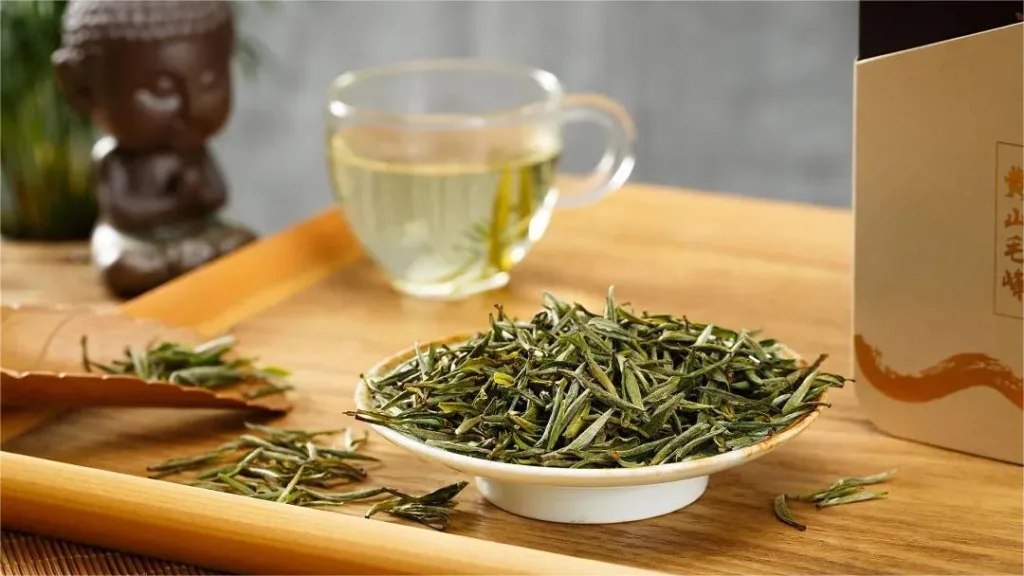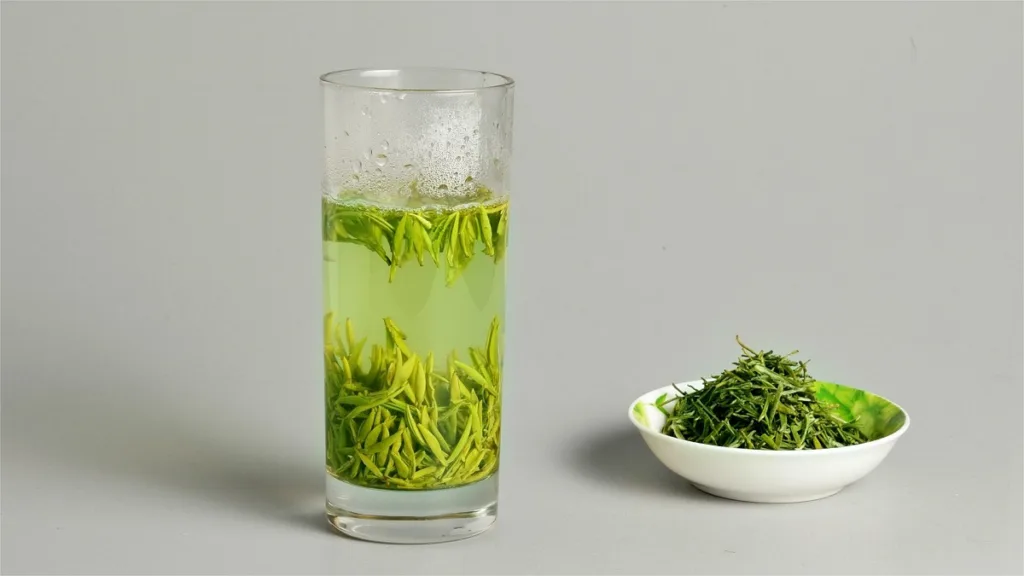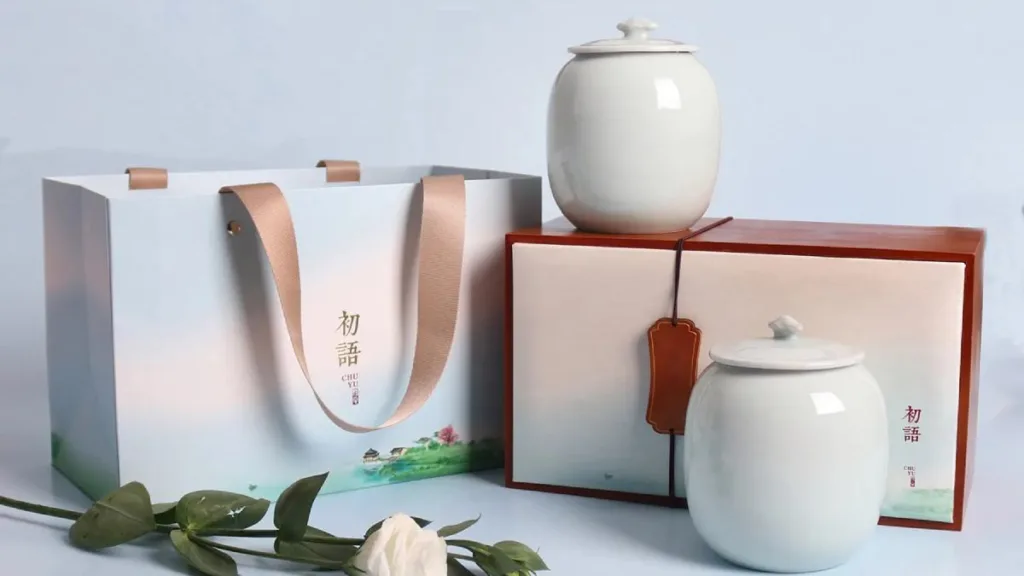Wuniuzao, a specialty of Yongjia County in Zhejiang Province, is a nationally recognized geographical indication product in China.
Origin and Characteristics
Wuniuzao, also known as “Early Longjing Tea,” is known for its exceptionally early budding. The tea leaves begin to sprout in late February to early March, boasting dense and plump young shoots with a rich, emerald green color. These tea leaves are abundant in amino acids, with a content of approximately 4.2%. The leaves have a moderate amount of fine hair, and they are known for their tender qualities. Wuniuzao has excellent resistance to adversity and maintains high yields, making it ideal for producing green tea, especially premium flat-shaped teas. The tea has a flat and smooth appearance, with a well-arranged structure, prominent leaf tips, slight silver fuzz, and a tender and lustrous green color. The tea offers a clear and bright infusion with young and plump leaves, creating a consistent appearance. It is suitable for early spring cultivation in Zhejiang Province, especially in regions known for premium flat-shaped teas.
History
Wuniuzao, known as “Early Longjing Tea,” is an ancient Chinese tea with a cultivation history of over 300 years. It is produced in areas including Wuniu Town and Luodong Township in Yongjia County, Zhejiang Province, and it is famous for sprouting about a month earlier than other tea varieties, earning it the name “Wuniuzao.”
Two hundred years ago, Wuniuzao was a cluster of wild tea trees growing in the Longjia Ridge, located between Banling Village in Oubei Town and Lingxia Village in Wuniu Town, downstream of Nanxi River in Yongjia County. The spring shoots on these trees grew particularly lush and early. During a family visit on Chinese New Year’s Day, a man named Jin Zehong from Longtou Village in Oubei Town passed by this ridge and noticed these thriving tea trees. He decided to uproot these tea trees along with the soil and plant them in his own garden. The tea trees proved to be early spring harvest (one bud and two or three leaves) even before the spring equinox, making them ready for picking about 15 days earlier than other varieties. Consequently, they were named “Wuniuzao,” with “Wu” meaning black, “niu” meaning cow, and “zao” meaning early. Another local name for this tea, “Lingxia Tea,” emerged due to its earliest discovery in Lingxia. The cultivation of Lingxia Tea became widespread in the areas of Luodong and Wuniu, becoming a local specialty.
Brewing Method
- Warm the Cup: Pour hot water into the cup to fill it approximately one-third full. Then, gently swirl the cup to pour the warm water into a tea boat. Warming the cup is essential to prevent a significant temperature difference when adding hot water to the Wuniuzao tea leaves later.
- Prepare the Tea: Place the Wuniuzao tea leaves into the tea holder, making it easier for both the host and the guest to appreciate the dry tea leaves.
- Transfer Tea to the Cup: Carefully transfer the Wuniuzao tea leaves from the holder into the glass cup. The ratio of tea to water is generally 1:50, but it can be adjusted according to personal preference.
- Rinse and Soak: Pour approximately one-fourth of hot water (at 90°C) into the cup. Place the kettle down and gently rotate the cup counterclockwise to allow the Wuniuzao tea leaves to soak, allowing them to absorb water and expand slowly. This enhances the initial fragrance. This step should take no more than 15 seconds.
- Brew: Use the “Phoenix Three-Dips” method, which involves pouring hot water into the cup using three quick dips, allowing the water’s flow to agitate the tea leaves and ensure a consistent tea concentration. Fill the cup to about 70% full, following the saying, “seven parts tea, three parts sentiment,” which suggests that tea should take up seven out of ten parts in the cup.
- Appreciate the Tea: Start by inhaling the tea’s aroma, followed by admiring the tea’s color. You’ll notice a light mist in the cup, a clear and bright emerald green liquid, plump and evenly distributed tea leaves, and an array of unfolding leaves. This step allows you to explore the evolving aroma, the flavor, and the delightful aftertaste.
Health Benefits
Wuniuzao offers several health benefits, such as:
- Weight Management and Cardiovascular Health: Wuniuzao tea can assist in weight management, as it contains compounds that enhance metabolism and provide energy. Its connection to heart and brain health has been recognized for centuries.
- Antioxidant and Anti-Inflammatory Properties: The tea’s rich content of catechins and other antioxidants can protect the body from oxidative stress and reduce inflammation, contributing to overall well-being.
- Oral Health: Wuniuzao tea contains fluoride and tannic acid, which can help prevent dental issues such as cavities and gum disease, as well as reduce bad breath.
- Skin Benefits: The tea’s antioxidants, including vitamin C and caffeine, have been found to combat oxidative damage, improve skin texture, and minimize the appearance of wrinkles and blemishes. Applying used tea leaves as a mask can be an effective natural remedy for healthier skin.
- Brain Health: The caffeine content in Wuniuzao tea provides a gentle energy boost, enhancing mental clarity and cognitive function. It can help you stay alert and focused.
- Longevity: While it may not offer immortality, Wuniuzao has been associated with increased longevity due to its various health benefits.
- Digestive Aid: Wuniuzao tea has been found to help alleviate digestive issues, including bacterial-induced acute diarrhea.
Wuniuzao’s versatile health benefits make it a valuable addition to your daily routine, contributing to overall well-being and vitality.




